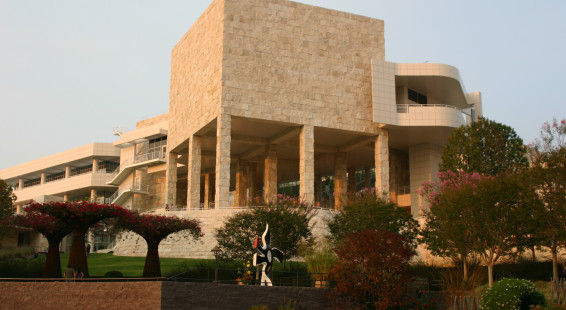
With so much attention recently to the “Occupy Wall Street” gang, those who belong to the “One Percent” (i.e. the wealthiest people in the country) have received a lot of negative press. We’ve heard that they’re greedy villains, ruthless and unfair, and how they’re not “paying their fair share” (even though most pay millions in taxes a year). We’re to believe they only take and never contribute to society. As you’ve probably gathered from my comments, I don’t subscribe to these views, although I would agree that like all groups the One Percent probably has some unsavory characters. I think it’s great that America is — at least used to be — a place people could work hard and get ahead. I’m certainly far from a “One Percent-er” but have never felt envious of someone having more than I do. I live a full life enjoying travel, my work, my family, my friends, and my faith.
What you’ll rarely hear about is the good the elite wealthy often manifest. Probably the finest example of this is the Bill & Melinda Gates Foundation, funded by the Microsoft gazillionaire and his wife. The Gates’ have chosen to spent the surplus of their fortune for the benefit of mankind in areas they’re passionate about. They do so by funding thoughtfully chosen projects, like their fight against malaria in the Third World or bringing computers and software to under-served regions. There is little doubt in my mind that the business savvy Gates’ use their fortune more wisely and efficiently, and to the benefit of far more people, than if they handed their cash to (or had it confiscated by) government.

Getty Center, Los Angeles
Another wonderful example of a legacy bequeathed to American society is that of J.P. Getty, one of the world’s first billionaires who, like Bill Gates, was the richest man in the world during his time. Getty, an unpleasant but highly successful businessman, was a passionate collector of antiquities and art. Collecting became the center of his interest. His view towards his hobby is summarized by his quote, “The beauty one can find in art is one of the pitifully few real and lasting products of human endeavor.”
Getty enjoyed the beauty of art and wanted others to share his passion. His personal collection formed the basis of the J. Paul Getty Museum in Los Angeles. His estate left $661 million to the Getty Trust in 1976 and that money has been wisely invested, used to buy numerous additional pieces of art and to create places for its presentation. The work has expanded to include education and art preservation. The trust is still very well funded, even after these massive expenditures, and it looks like its work can continue for decades to come.
The Getty Museum currently is housed in two branches both in Los Angeles’ Westside, one in Malibu and the other in Brentwood. The first constructed was the Getty Villa in Malibu. Its architecture was inspired by a rural Italian villa which was destroyed by an eruption of Mt. Vesuvius before the birth of Christ. The Getty Villa is situated just above the Pacific Ocean and is an elegant building on magnificent grounds, with Romanesque gardens. J.P. Getty was actively involved in the planning and construction of the Villa but did not live to enjoy its completion. The Villa features the main antiquities portion of Getty’s collection including Greek, Roman and Etruscan relics.

Cactus Garden, Getty Center
The gem of Getty’s legacy is the Getty Center, opened in 1997 and situated in the Santa Monica Mountains in West Los Angeles, a truly magnificent structure in a most memorable setting. The property has beautiful gardens and grounds and wonderful architecture, the product of Richard Meier’s imagination. With views of all of West L.A., UCLA campus, Century City and the Pacific Ocean, it’s hard to imagine a grander property or locale for an art museum.The center is built of travertine marble (over a million square feet of it) which brilliantly captures the Southern California sunlight. The Getty Center houses the more modern works of the Getty Collection ranging from furniture to sculpture to paintings by Renaissance masters (eg. Rembrandt and Rubens) to modern masterpieces (eg. Van Gogh).
Admission to both properties is free. You need to pay for parking at both facilities and the Getty Villa requires a reservation for parking. You’ll want to spend at least a full half day at each of these locations. You could cram visiting both into one long day but I think you’d be “museumed out” and miss a lot. Better to split the visits onto separate days so that you can enjoy the fine buildings, beautiful landscaping and wonderful collections.
So this is part of the legacy of the One Percent. I wonder in fifty years what the legacy of the Occupy Wall Street crowd will be?
(Click on thumbnails to enlarge, right arrow to advance slideshow)







































